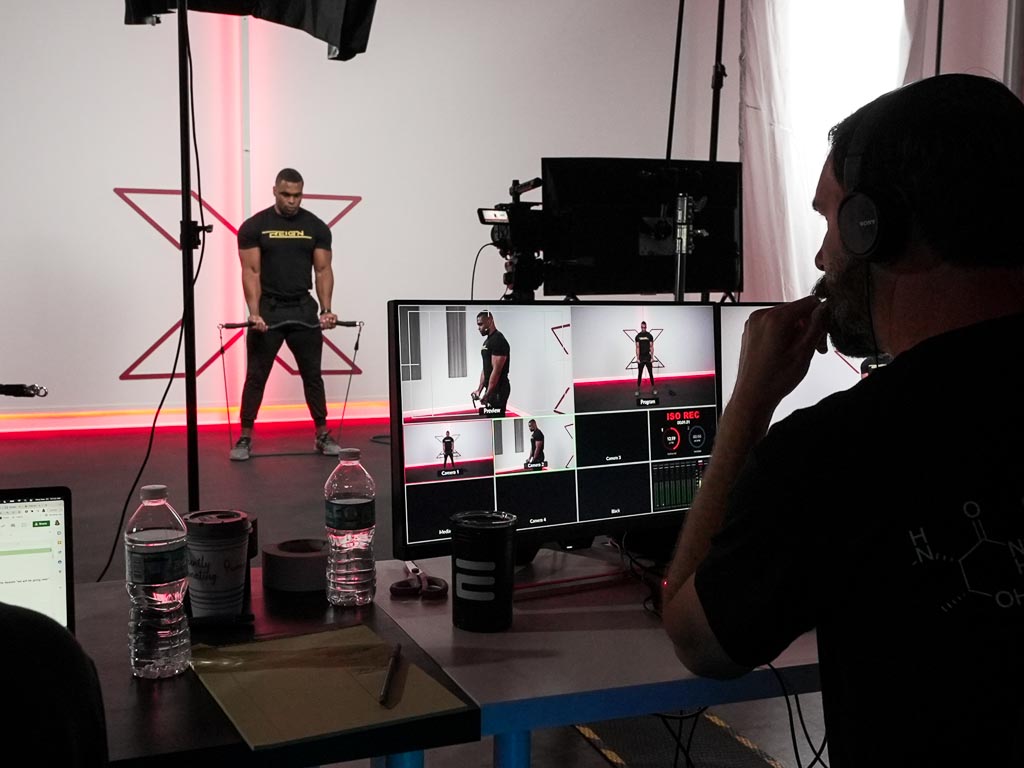Consumers today often find they do not always have control over their time management. That early morning workout could be changed to early afternoon when children return to school, or that Wednesday lunch workout could be moved due to a new conference call schedule. VOD is about being able to access video on demand or when the customer wants it. Working within their own changing schedule, consumers need as much flexibility as possible from their fitness video provider.
Video On Demand
Making fitness videos has become an exciting enterprise, and live-streaming is a big part of it. Not every consumer can carve out a regular schedule that matches the live video, so they want to be able to access when the time is right for them. That is where the on demand part of video on demand comes in. Customers can log in, select the video they want, and they can play it at a time they choose. It sounds simple, but there are a few more items to learn about this type of service.
Three Models of Video On Demand
There are plenty of ways to market almost any product, but a fitness video production needs to understand them before making a choice. There are three ways to market videos to consumers, and they are SVOD, TVOD, and AVOD. Each one has advantages, yet there are some clear choices that may make one method better for your fitness video production and distribution than another.
The Subscription Model
Consumers with a need to view on an ever-changing schedule may be willing to pay for a service that grants them access to all your videos. They are charged a regular subscription or membership fee for that privilege. This is one of the fastest growing ways to market fitness videos on demand, and it can be a good way for you to make money to cover costs and generate a profit. Each video is computer loaded, and multiple subscribers are able to watch any video when it is convenient for them. They demand, you fulfill, and the subscription fee covers the costs. Each video may not be viewed often, but the fees each week, month, or year, continue to roll in. Making more videos to add to the library can help expand the customer base, and it can lead to more profits.
There are plenty of services where a subscription fee being paid on a regular basis offers consumers on demand choices. Hulu, Amazon, and Netflix are all examples of video on demand, and they have become enormously popular with members. They pay a fee every month, and they can watch whatever they want at the time of their choosing. No waiting for a day or time for the video to be available, and they can view without additional fees.
SVOD And The Consumer
Few modern consumers are ready to jump right into a subscription without seeing exactly what they are getting for their money, so offering a limited free trial is often a good way to woo them. You can offer a free trial that lasts just a week, or you might want to consider an additional week or three to give consumers an opportunity to value your library. Conversion rates are generally just over half of consumers choosing a paid membership after a free trial. Netflix is a good example of this strategy.
It might appear that losing nearly half of those free trial users would negatively affect profits, but the users signing up tend to remain with the service they have chosen. One more point is that while they will enjoy a free trial before moving on, the free trial model tends to generate nearly two hundred percent more profit than no free trials at all.
The Transaction Model
Pay-per-view enjoyed a profitable audience when cable first became popular, and it is still around today. This type of viewing is called TVOD for transactional on demand video, and it is in use today where fitness video production is available online. The consumer does not have access to your entire library, but they can buy access to one video or a package of videos for a set price. It can be an option if your library is still small, but it does not always bring in as much profit as SVOD.
There are consumers willing to use the transactional model, and it has been a success in other areas of marketing. ITunes lets consumers buy a song for a small fee, but they will have to pay again for another song. Google Play works on the same principle. This is a good choice for consumers only seeking a particular video or series, but it does limit them and the company. They only get what they have paid for, and the company does not receive a recurring fee. They must convince the consumer to purchase additional videos before they make more income.
The Advertisement Video On Demand
Getting something for free appeals to many online consumers, and AVOD can fulfill their particular needs. The consumers does not pay a fee to watch a video, and they do not have a membership They instead watch the video of their choice, and it is set up so advertisements play throughout the video or at specific times. The ads are the revenue source for the fitness video production, and that is why the consumer can view videos without paying. The goal is to sell them products and services that go along with the type of video they are viewing. It is a nice concept, but it does generally bring in the least amount of money.
The demand for free viewing is relatively high, and the popularity of All 4 and YouTube are based on AVOD. They play commercials during the videos to pay for them, and consumers are given free access. While it might seem like an easy way to generate income, the rate is per thousand unique viewers, and it is a relatively low payout. It requires many thousands of viewers to generate a good enough income to create a sustainable fitness video production.
These are the basic models for marketing on demand videos, and each one should be considered in light of monetizing your fitness videos. While AVOD generates the least amount of income, it can get your brand wide recognition. Monetizing your brand after a year or two could become more profitable by switching to TVOD or even SVOD. Hulu is an example that started out as a free service, but they now offer subscriptions. It may take time, but your fitness video production can become profitable by producing video on demand for today’s consumers.


